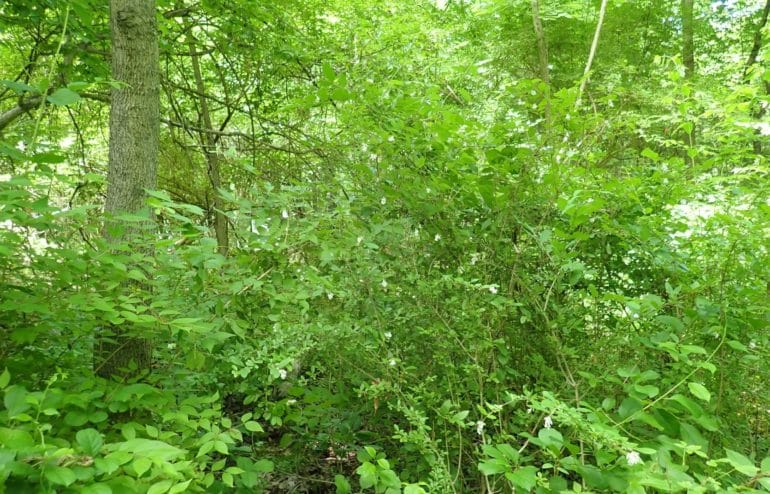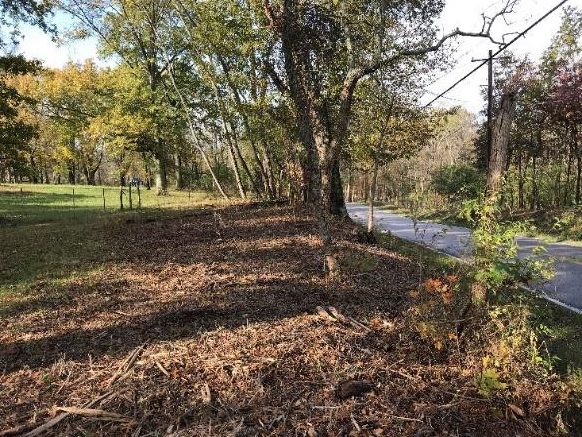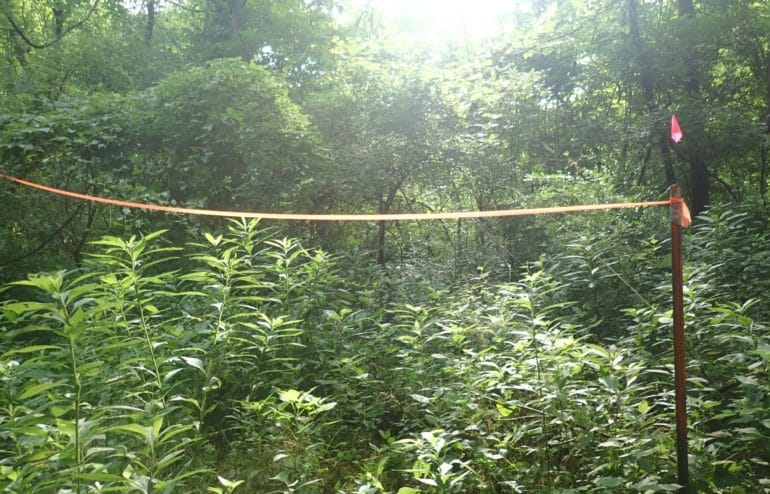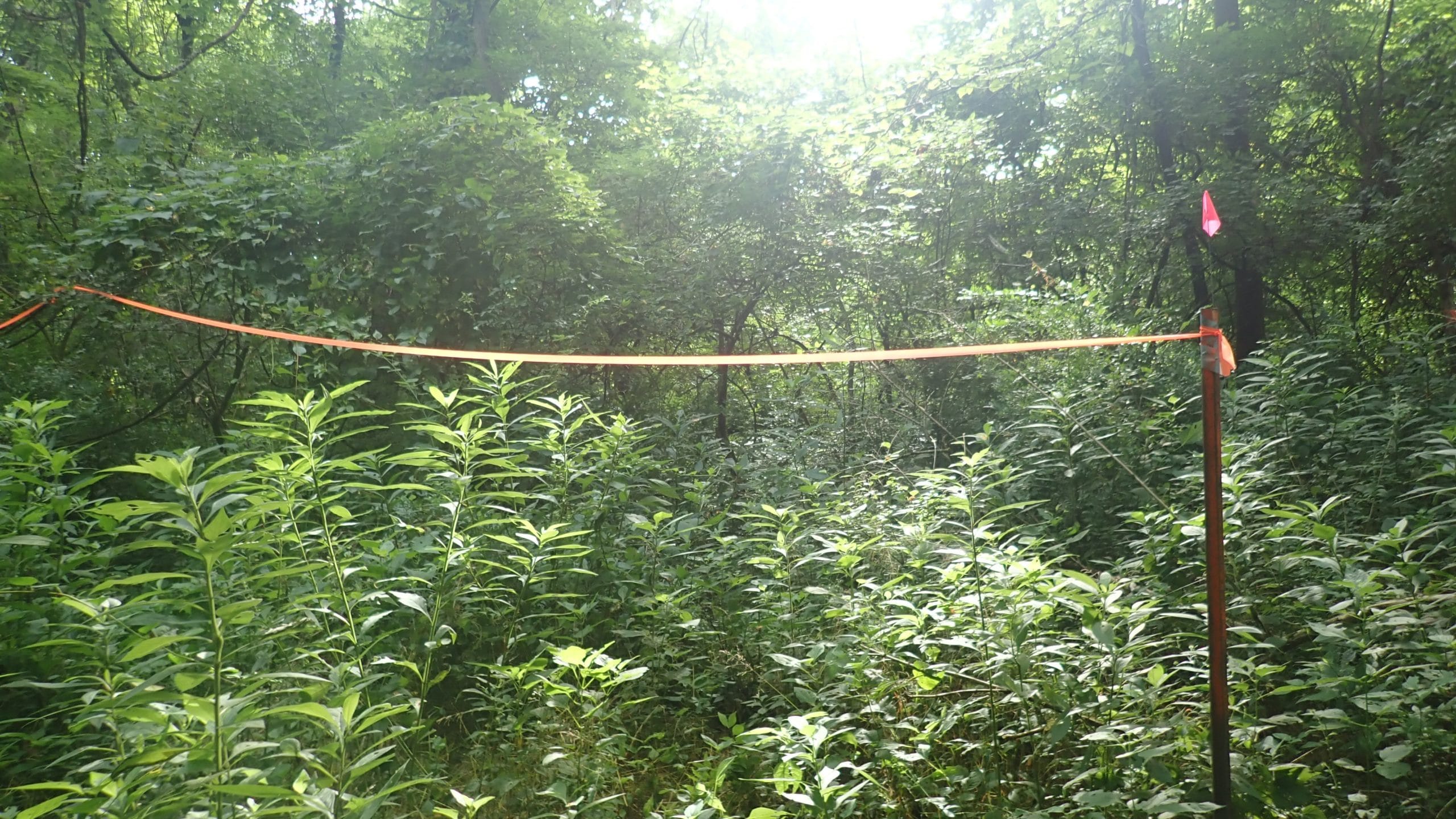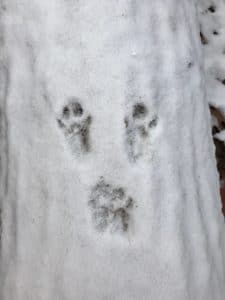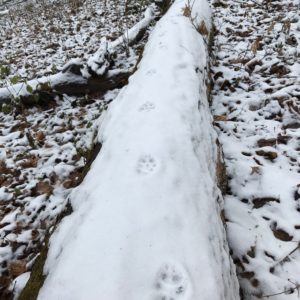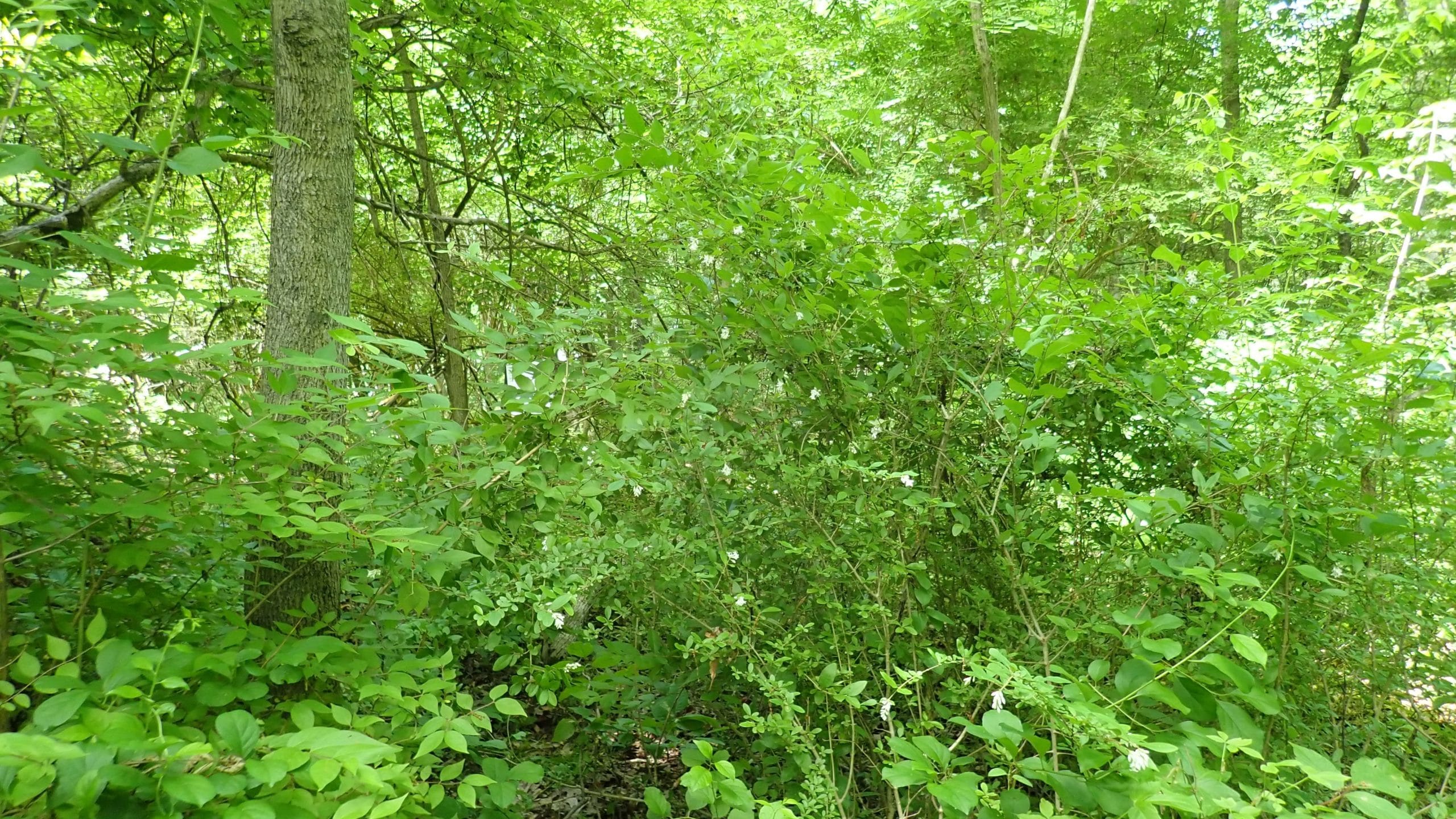
The “honeysuckle woods”
In 2017, the research team identified the “honeysuckle” woods on the property where the honeysuckle removal project will happen. Three main treatments (basal spray, hand cut stems and mechanical removal) will be applied to different areas of the woods and the impact on vegetation and seedlings monitored. A separate property in Indian Hill will remain untreated and serve as the control for the experiment. The main treatments will then be subdivided into additional treatments. In the basal spray treatment the honeysuckle skeletons will be left standing in some locations or removed the following spring. There is some evidence that standing dead honeysuckle protects emerging tree seedling from deer browsing. The hand cut stems will either have herbicide applied to the stumps or this application will be delayed until fall when a foliar spray will be applied. Finally the mechanical cutting of the honeysuckle will be followed by spraying while other areas will see a delay and foliar spray applied in the fall. Subsequent monitoring will help us determine which treatment is most effective at producing a thriving community of tree seedlings and native vegetation.
Image A shows hand cut stems sprayed with herbicide and image B shows the result of large scale mechanical removal of honeysuckle. The research team is collecting data on what happens next after different honeysuckle removal strategies are employed.

